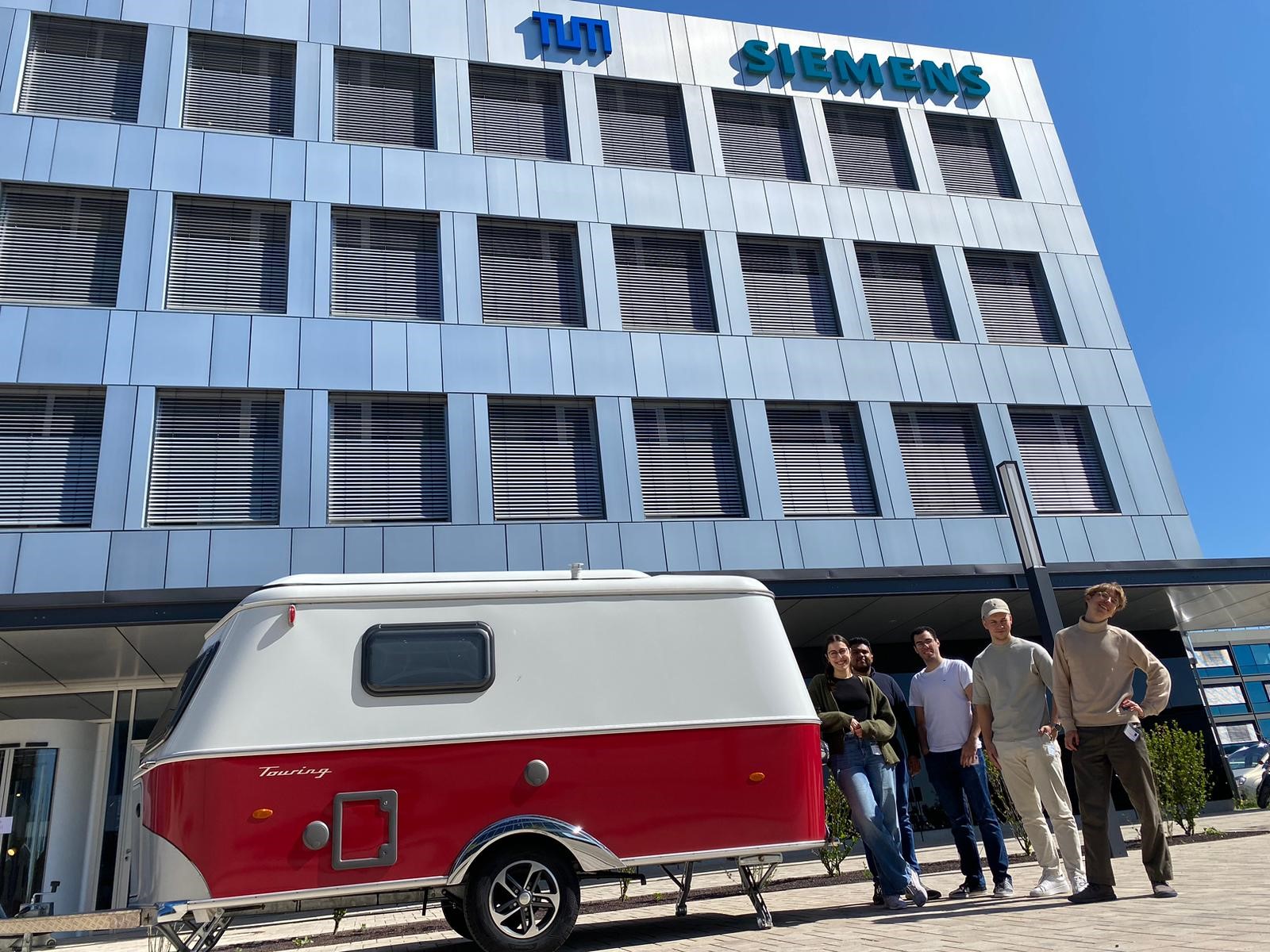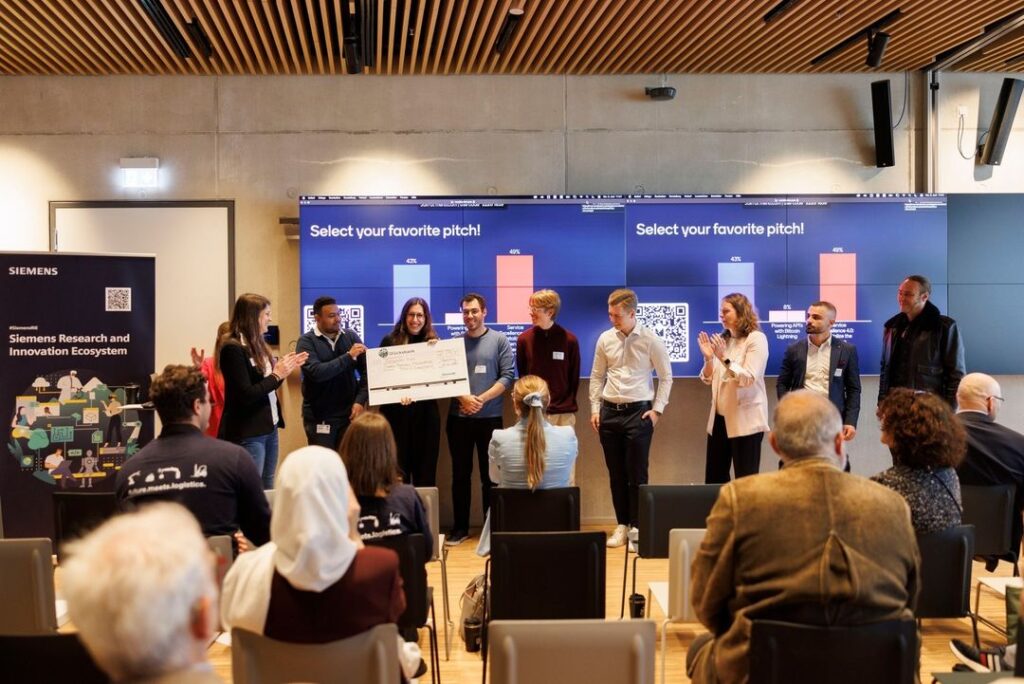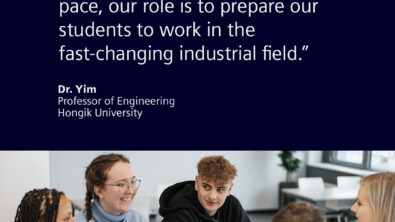Siemens Mentoring Program & Hackathon: A Pathway to Innovation and Growth

At Siemens, we believe in empowering the next generation of professionals through meaningful mentorship and hands-on experiences. The Siemens Mentoring Program has become a cornerstone for many aspiring talents, offering unique opportunities for career development, networking, and skill enhancement.
Siemens Munich Mentoring Program: Unlocking Career-Boosting Opportunities Beyond the Classroom
“The Siemens Mentoring Program we have now organized for the 12th time offers invaluable experiences beyond traditional education. By participating, students gain hands-on experience with cutting-edge technology, and build a network of like-minded peers,” says Inga Becker, Senior Consultant University Relations at Siemens Technology and co-lead of the initiative. Siemens colleague Constanze Welter, Senior Consultant University Relations at Siemens Technology, wants to encourage future students to join the program for its numerous benefits: “Our participants often recognize the immense value of mentorship in understanding company culture and receiving support from professionals.”
Erkin Karaman, student of Management & Technology at TU Munich, confirms these assumptions: “I joined the Siemens mentoring program to take advantage of the unique and valuable opportunity to gain guidance from a mentor. Additionally, Siemens’ role as an innovative company is exciting, and I can envision a future working there. I believe this experience will greatly benefit my personal and professional development.” Hakan Acundaş, student of Informatics at TU Munich, adds: “Most of our time is spent at school and focusing on courses. However, beyond academics, there are incredible opportunities. While academic success is crucial, I believe the key to complete satisfaction lies in being social and seizing every opportunity available. Receiving advice about your academic life or career from a senior official at Siemens is an opportunity no one should miss!”
Sparking Innovation with a Hackathon
Part of the Mentoring Program is also a weeklong Hackathon including three challenges this year. One of the projects was contributed by Siemens Digital Industries Software, with their partner TeamViewer and customer Hymer this year. The task was to create a concept for a better, more digital user experience, replacing paper manuals with easy-to-use Augmented Reality(AR) instructions, utilizing state-of-the-art technologies and software tools like Teamcenter Visualization, Teamcenter Share, TeamViewer Spatial Editor, and CAD data derived from Solid Edge.

Søren Heiberg, student of Mathematics at TU Munich and part of the “Hymer team”, says that he strongly believes in the power of visualization. For that reason, he picked the challenge, as “visuals make learning and problem-solving more intuitive.” His teammate Erkin, who had already collected some experience working for three years at a camper reseller, wanted “to apply his expertise in sales with solving a concrete technical problem.”
Three tools, multiple learnings
To develop a concrete solution for the given task the respective CAD data of the Eriba Touring camper van was shared from Hymer via Siemens Teamcenter Share, the cloud-based collaboration platform from Siemens. In the same tool, all documents and also all crafted workflows were stored. Sathwik Amburi, student in Informatics, says, “We used TeamViewer Frontline Spatial Editor to create a specific workflow that would identify various components of the Hymer van, visualizing its distinct parts. With the help of built-in object tracking by the software, we were able to create AR manuals that track the vehicle in real-time. The editor’s interface was intuitive, making it easy to navigate and utilize the various features effectively.” Tim Koller, Solutions Engineer at TeamViewer, helped the students the first day to get to know the AR software Frontline Spatial. “In the first step you create the AR content in Frontline Spatial Editor. You import the relevant 3D CAD data, you can create holograms and animations and add text or media data like pictures or documents. It’s pretty easy to learn and you don’t need any programming skills. Then you can upload your AR workflow and use it afterwards on your end device”, says Koller. “For TeamViewer, the hackathon was a nice way to demonstrate the capabilities of our software to the whole Siemens Mentoring Program ecosystem.”

From Siemens’ side, Presales Solution Consultant Sebastian Schleser supported the students in getting an introduction to Siemens’ software tools and the overall process of how the different tools work together: “You need Teamcenter Share to collaborate between different departments or even across companies. The integration between TeamViewer’s Frontline platform and our platform Teamcenter is beneficial for the AR content creation process because you can reuse the stored data and work always up to date.”
The solution developed during the hackathon offered significant benefits for Siemens, our partner TeamViewer, and last but not least our customer Hymer. Uwe Dautert, CAD user at Hymer and responsible for the collaboration: “The prototype the students developed supports clearly our mission. Getting rid of complex and difficult-to-understand paper manuals and documentation. Instead, we want to provide an intuitive user experience, which means often to embed the installation and repair process into a more digital environment.” From Hymer’s perspective, such a solution could also help to increase customer satisfaction or be applied to a totally different scenario, such as product promotions, trainings, or during assembly at the production site. The next step within Hymer could possibly be to display the user interface on tablets, smartphones, or AR glasses, making the data accessible on these devices.



Sebastian Schleser adds: “We need to gain more insights into how our and TeamViewer’s software platform are being utilized together in actual customer scenarios and identify potential areas for improvement. For that reason it was important to see how unbiased minds would approach a dedicated solution, allowing us to better understand user experiences and refine our offerings to meet the needs of the young generation.”
The hackathon posed several challenges for the participants. Aysun noted the logistical difficulties: “Since we worked one-on-one with the Hymer caravan, it was not possible to work remotely. Secondly, since our pitch presentation was limited to 5 minutes, we needed to present both the demo and all other information most effectively.”

Inevitable success
During the hackathon, the participants learned valuable skills in teamwork, task organization, and presentation. Aysun Ogut, student of Management at TU Munich, summarizes her experience in this way: “Acting as one team results in good outcomes. Trusting in your teammates’ abilities and allocating tasks appropriately significantly streamlines the process. Diverse backgrounds enable various perspectives on the project. Moreover, presenting your findings accurately and engagingly makes success inevitable.”
In the end, the Hymer project was rewarded as the best from the voting audience at the Siemens RIE conference, which took place June 3rd at the Siemens Technology Center Garching.



